This is another post in our Content Performance series, in which we look at what B2B businesses need to make their marketing more effective.
Choosing the right marketing automation tool is like picking a needle in a needlestack.
Spend half a minute staring into the abyss that is Brinker’s Beast and you’ll know what I mean. The amount of MarTech out there is staggering. And there’s more every year.
Which is why so many people end up taking the ‘I’ve heard of Salesforce, and they’re good, so I’ll go with them’ approach.
And before it sounds like I’m criticizing Salesforce, I’m not. Salesforce is great. But that is a terrible approach.
I’ve been lucky enough to work with many different tools for our content performance clients. So I’ve seen pretty much every platform and side-by-side comparison you’ll find.
To the naked eye, it looks like they all offer the same range of all-singing-and-dancing capabilities. There’s a good reason for that. They kind of do.
Pretty much every platform today can give you the tools to make your marketing processes more efficient and less manual. But here’s the truth no vendor out there will ever tell you:
Choosing a marketing automation tool isn’t about comparing technical capabilities.
It’s about clearly articulating your goals as a marketing organization and then figuring out what the technology can do to help.
That might sound pretty obvious, but this is the eat-your-greens part of the process that you can’t afford to rush through.
There’s so much you can achieve with just a bit of upfront thinking and planning. So without any further ado I’d like to present:
The Velocity super-secret goals-driven bullet-proof recipe to choosing your new Marketing Automation software
When working on a brand-new automation project our content performance team follows a deep-dive process involving five crucial steps.
To do it well, you’ll need to include a range of key stakeholders from management, marketing and sales (trust me, you don’t want to do this in a silo) and it usually takes between three to four weeks.
The secret lies in mapping your requirements; your processes, your gaps and your goals, that will shape the core tool demands now and (crucially) in the future.
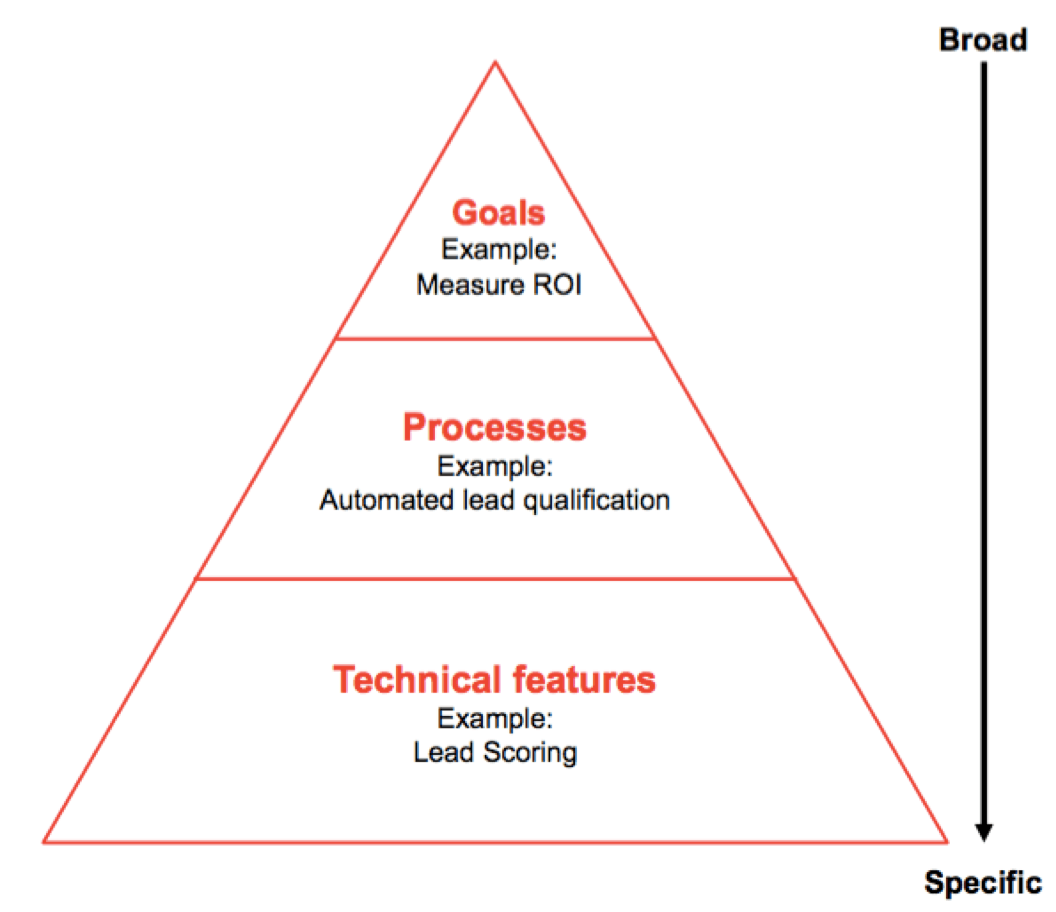
1. Review expectations from your stakeholders
Document your business goals, challenges and expectations from upper management. There’s no need to go into the nitty-gritty details, just get on the same page and define what success looks like.
This core step will help you understand your basic requirements of your new software. What’s more, mom and dad will know they’re involved in the decision-making so they’ll trust you more down the line.
Here’s a super-condensed real-life example of what this looks like:
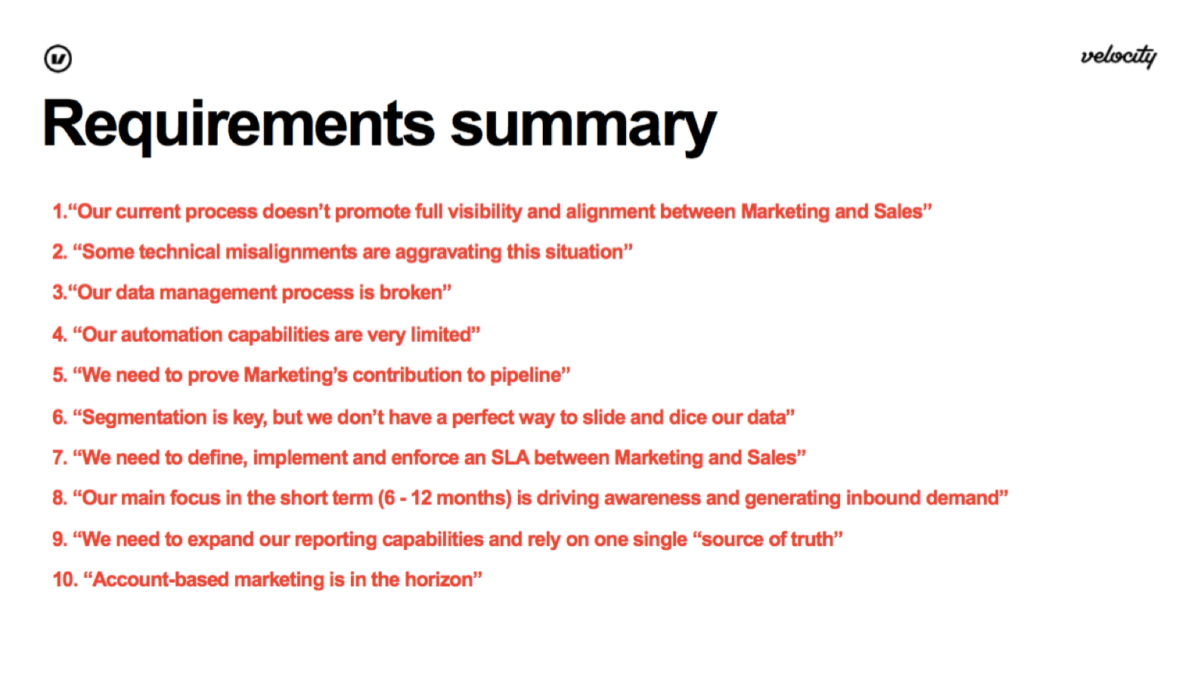
2. Talk to your peeps in Sales
Yeah, I know. But marketing automation is a Sales and Marketing game, not just a marketing one. Your sales team will play a key role in your new lead management process, so get them involved early in the process. Give them the opportunity to chime-in, and show them all the benefits of a structured, automated process. Once they’ve got a whiff of how you’re qualifying those leads, that’s half the battle won.
On the other hand, if you go ahead and do a bunch of set-up without their input, it’s going to be way harder to make changes (and way more tempting to ignore them).
3. Review the shape of your current marketing stack
Bring your marketing team together and re-visit what channels are important for you and how they are (or should be) supporting your business goals. What’s working? What’s not? This step will become very important at the tool evaluation stage.
For example, many automation tools support a bi-directional sync with your CRM (your Salesforce or Microsoft Dynamics). But if you run a lot of webinars, you should know that not every tool supports 3rd party integrations with GoToWebinar or WebEx.
Account-based Marketing is another great example, with just a handful of automation players (like Engagio, Marketo or Terminus) offering integrated solutions to really run and, most importantly, measure your ABM efforts.
Here’s a real scorecard example of how three top marketing automation providers would differently support the same business requirement:
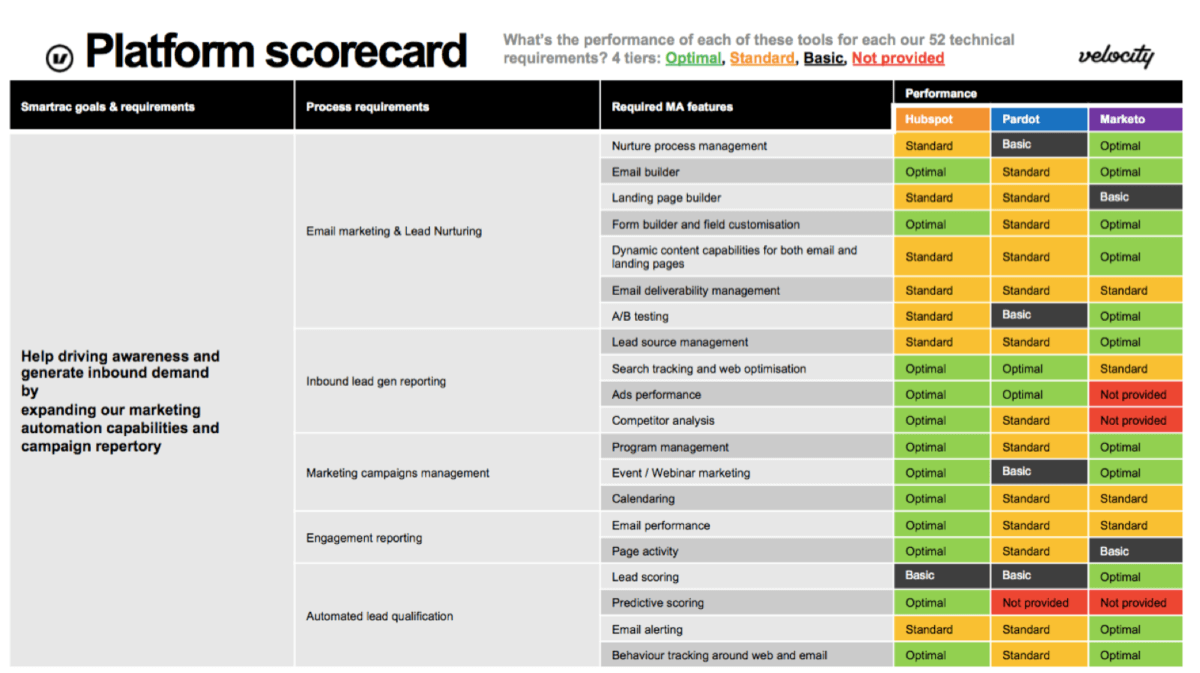
4. Set your aspirations – where do you want to be in 12 months?
You can do a lot with Marketing Automation, so defining your priorities upfront is really important.
If you’re trying to figure out what you can reasonably aim for in the next 12 months, here’s a Marketing Maturity Curve I tend to use.
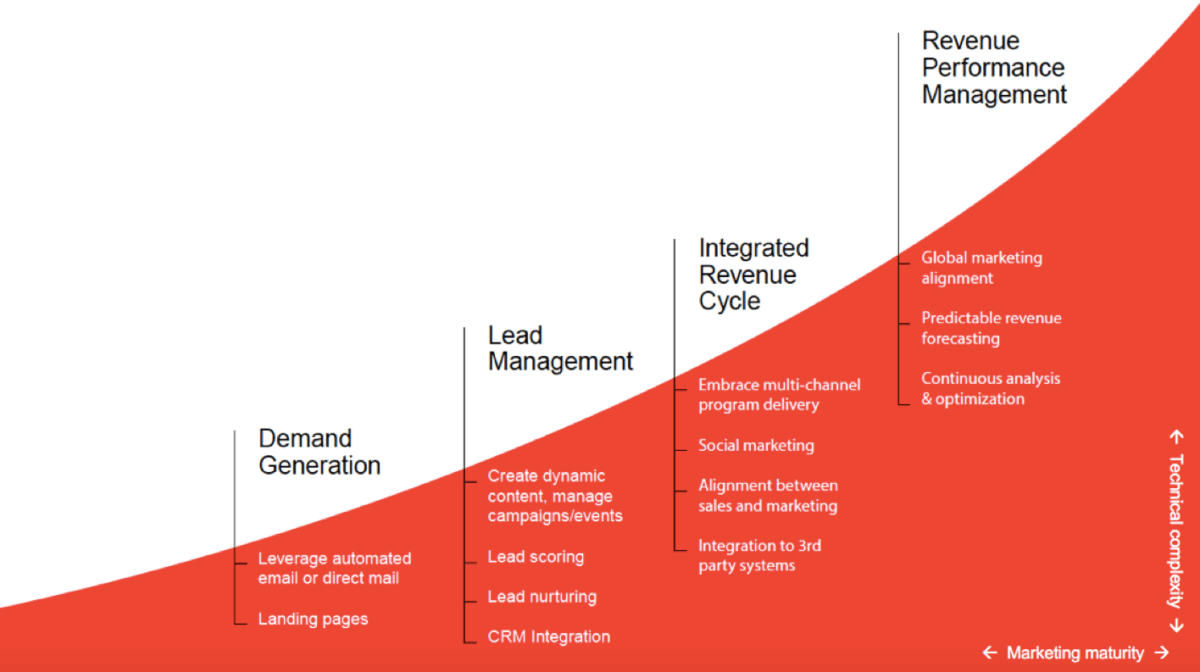
For some companies, being able to put out basic email nurturing campaigns and get simple, straightforward reports on their performance is more than enough to support their strategy. We love Hubspot for that.
Other companies need to think much bigger.
If your aspirations include revenue performance, ROI reporting and closed-loop analytics on your marketing campaigns, then you’re automatically qualifying for a more complex platform and a longer implementation period. Personally, I’m a big fan of Marketo’s Revenue Cycle Analytics (RCA).
5. Evaluate the options based on your selection criteria:
This is where everything comes together and you finally get your hands on some cool new toys. In this stage you need to:
- Chart the outcome of your discovery audit into a clear set of goals and priorities from each team.
- Align these goals against your marketing requirements, both commercial and technical.
- Evaluate how much each tool excels at each of their individual capabilities and determine how relevant those are for your specific goals. In my experience, you should be looking into at least two platforms.
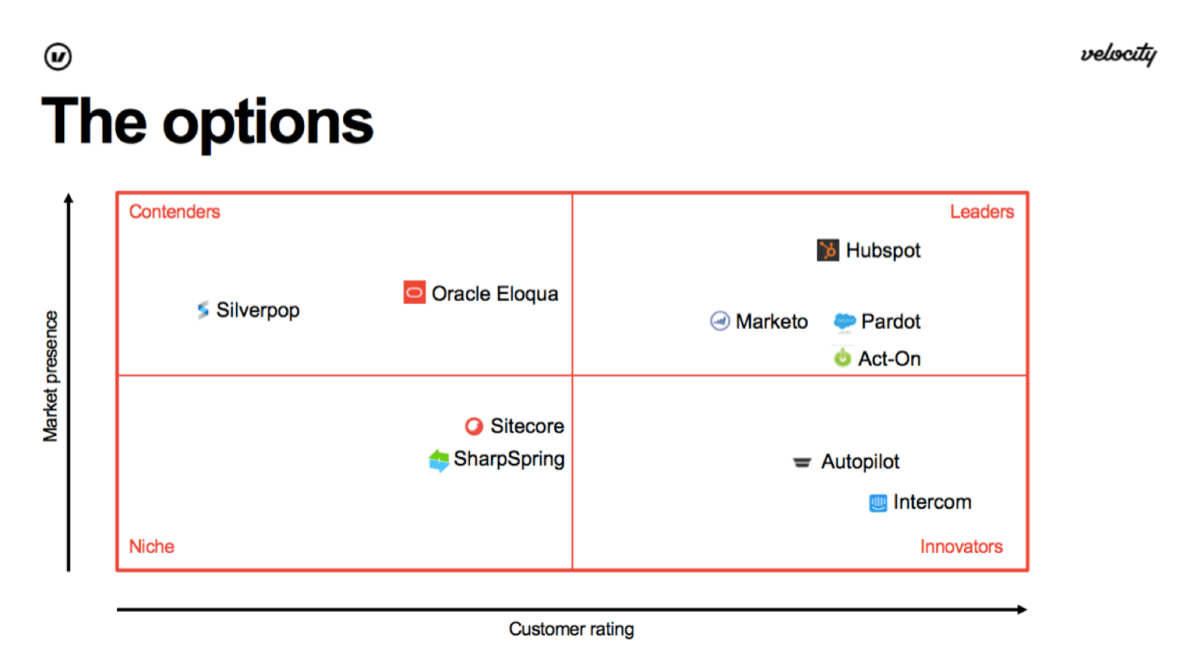
Automation is worth getting right
It might seem like all marketing automation platforms are basically the same. But you don’t want to rush into this decision.
Your ability to track your leads’ journeys, simplify your processes and calculate marketing’s impact all depend on you having the right tool.
And you’ll only know you have the right tool if you know precisely what your business needs.
Ask the right questions, answer them clearly and truthfully, and you’ll end up building a suite of tools around your business, rather than a business built around a suite of tools. You don’t want to do that.
Good luck with your selection process. If you get stuck, get in touch.
The Content Performance series;
Post 1: What is the future of content marketing?
Post 2: How to create performance marketing KPIs

Enjoyed this article?
Take part in the discussion








Comments
Philps February 7th, 2019
Hey guys, great article. Very interesting, I’ll share it with some of my friends. Yes, it’s one of the difficult tasks to select marketing automation. But thanks a lot, you have reduced the efforts of a newbie in the market.